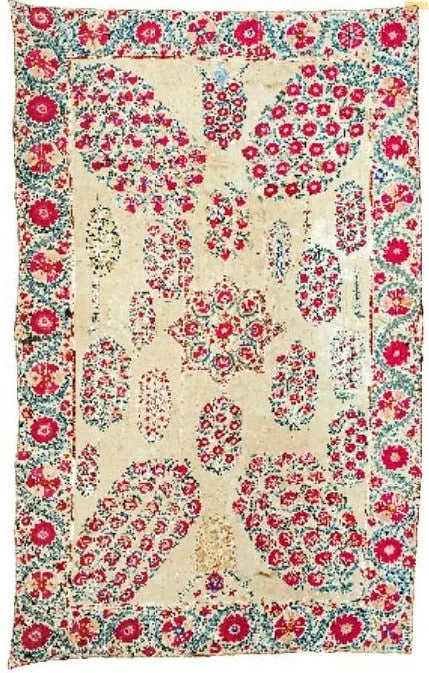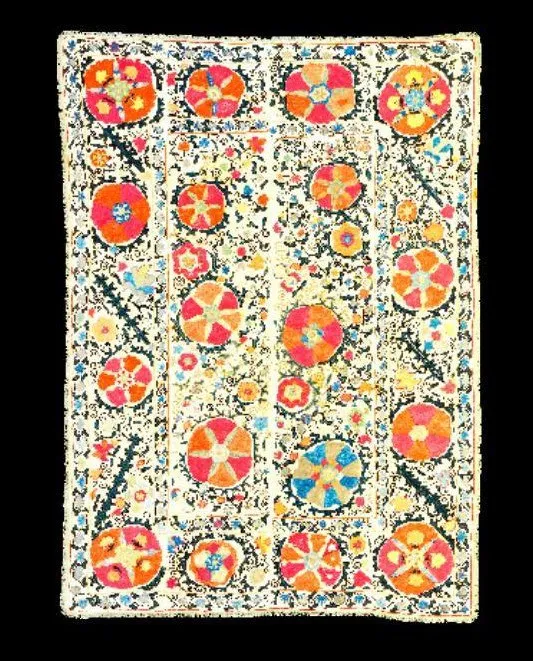The most famous centers of this art are Shakhrisabz, Nurata, Bukhara, Samarkand, Urgut, Tashkent and the cities of the Fergana Valley. The earliest known specimens date back to the late 18th – early 19th centuries, but their production probably started long before that time. In 1785, the emir of Bukhara, Shahmurad planted mulberry trees north of the city to revive the silk industry and resettled qualified weavers from the Merv oasis to the capital. According to some scholars, this fact could lead to the increase of the production of suzani and the appearance of those numerous artifacts now kept in museums and private collections around the world. One of the specimens presented in this section is notable for a wide variety of flower bouquets and is probably related to Nurata.
You can learn more about the topic in the book-album "The Cultural legacy of Uzbekistan in Italian Collections" (volume XXXII) in the series "Cultural Legacy of Uzbekistan in the World Collections".
The main sponsor of the project is the oilfield services company Eriell-Group.


